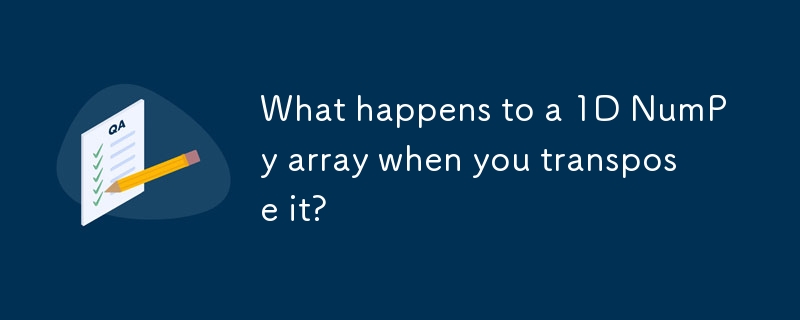轉置一維 NumPy 數組時會發生什麼?
- Mary-Kate Olsen原創
- 2024-11-15 04:22:02263瀏覽

一維 NumPy 陣列的轉置
使用 NumPy 陣列時,了解轉置的效果非常重要。通常,陣列的轉置會交換其行和列,從而產生具有交換維度的新陣列。但是,對於一維數組,轉置操作會產生不同的影響。
考慮以下 Python 程式碼片段:
import numpy as np a = np.array([5,4]) print(a) print(a.T)
它不會轉置數組,而是保持不變。這是因為一維數組的轉置本質上就是一維數組。與 MATLAB 中的「1D」陣列實際上是 2D 不同,NumPy 區別對待 1D 陣列。
如果您需要 1D 向量的轉置 2D 表示,可以透過使用 np.newaxis 切片向量來實現:
import numpy as np a = np.array([5,4])[np.newaxis] print(a) print(a.T)
現在,a.T 運算將產生轉置的 2D數組。
值得注意的是,向一維向量添加額外的維度並不總是必要的。在大多數情況下,NumPy 會自動廣播一維數組以進行適當的計算,因此無需明確區分行向量和列向量。
以上是轉置一維 NumPy 數組時會發生什麼?的詳細內容。更多資訊請關注PHP中文網其他相關文章!
陳述:
本文內容由網友自願投稿,版權歸原作者所有。本站不承擔相應的法律責任。如發現涉嫌抄襲或侵權的內容,請聯絡admin@php.cn

